Coconut Crab Hunting
No Comments
https://www.terragalleria.com/blog/coconut-crab-hunting
Going for a walk in the forest at night and in the rain may sound like a strange activity. However, joining a coconut crab hunt turned out to be an unexpected highlight of my stay in Ofu.

Throughout our second day on Ofu Island, the storm did not relent much. Between the episodes of torrential downpours, rainfall remained steady. To our relief, in the evening, it eased to light precipitation. We had been confined to the Vaoto lodge’s communal area since the morning, but we were going to go coconut crab hunting. I first read about the creatures from the words about Palmyra Island in Pacific Remote Islands Marine National Monument that Ian Shive contributed to Our National Monuments:
Almost every day is barefoot to some degree, but the football-sized coconut crabs keep you—well—on your toes. Their pincer is the second strongest vice grip in the animal kingdom, ranking somewhere between an alligator and lion’s jaws; thankfully, they prefer to scavenge the beaches and eat the flesh of a fallen coconut (hence their nickname).After Manaia had mentioned that he would go coconut crab hunting in the evening with his grandson George, we were excited that he let us join him. I rushed to our cottage room to grab my rain jacket, camera, and lights. During a dry day, coconut crabs stay hidden in burrows to reduce water loss from heat. They are active at night or sometimes in wet weather, so a rainy evening is the right time to look for them outside of their holes.
Not as inaccessible as Palmyra, yet with a tiny population of about fifty, Ofu Island is the right place to look for them. The only native mammal on the Samoan Islands are fruit bats. Coconut crabs have no predators. Their initial range corresponded to the native range of the palm coconut. However, because their meat is considered a delicacy now reserved for special occasions, they are subject to extensive hunts and have all but vanished in populated places. They were once present on Tuitula, the main island of American Samoa, but nowadays none are left. On Tau, Manaia’s home island which has a population an order of magnitude larger than Ofu Island, one needs to venture to remote areas to find them. On Ofu, they can be located a short stroll behind the lodge.
Despite their name, coconut crabs feed on several fruits and nuts. Coconuts are only a small part of their diet, but they seem to like them enough to sometimes climb coconut trees and cut down a coconut from it. They can open coconuts to eat their flesh, but despite their incredibly strong claws, the process can take days. A cut coconut with exposed flesh is therefore irresistible. During the day, Manaia walks into the forest and lays cut coconuts near their burrows. The hunt consists of walking back the same path at night, hoping to see a crab so engrossed with eating a coconut bait that it becomes easy prey. Despite their formidable claws, they are not difficult to catch if one knows how to handle them. To kill them Manaia needs only to reach with one hand to their underside and break the equivalent of their neck with a quick finger press.
The key is to find them at the right moment. To a westerner, Manaia’s method of hunting may appear inefficient compared to trapping. He views coconut crab hunting as a sport akin to fishing. That traditional Samoan approach helps maintain a natural balance with the natural world. During our hunt, we found several specimens of seemingly respectable size, but none were mature enough for Manaia to catch. Coconut crabs can live up to sixty years, and reach up to nine lbs of weight and sixteen inches of body length. They are part of arthropods, a taxonomic class that includes crustaceans and all insects. Of all arthropods, they are the largest terrestrial species. One would expect to find them at the beach, however, although coconut crabs start their lives as plankton before a transitional hermit-crab phase, mature coconut crabs are land animals that cannot swim nor breathe in water – their gills are vestigial and instead they have developed peculiar lungs. On Ofu Island, they dwell in the forest.
Only minutes away from the lodge, the hilly forest terrain is tricky to walk at night as the rain makes the ground, rocks, and branches slippery. At the same time, the jungle vegetation presents constant obstacles. Despite bringing a bulky underwater strobe, I did not pack a regular flash for my camera, so I light the crabs with a flashlight in my left hand, which leaves only my right hand to hold the camera. Even using ISO values up to 12,800 I still need to compromise with less than ideal depth of field or shutter speed while the critter is trying to scurry away from the spotlight. On three different hunts, Manaia has not caught a crab of appropriate size. However, I feel privileged just to have seen the creatures in the wild, knowing that it is an experience that few had and that I could have easily missed. In a trip during which so many plans were thwarted, this unplanned activity turned out to be a highlight.
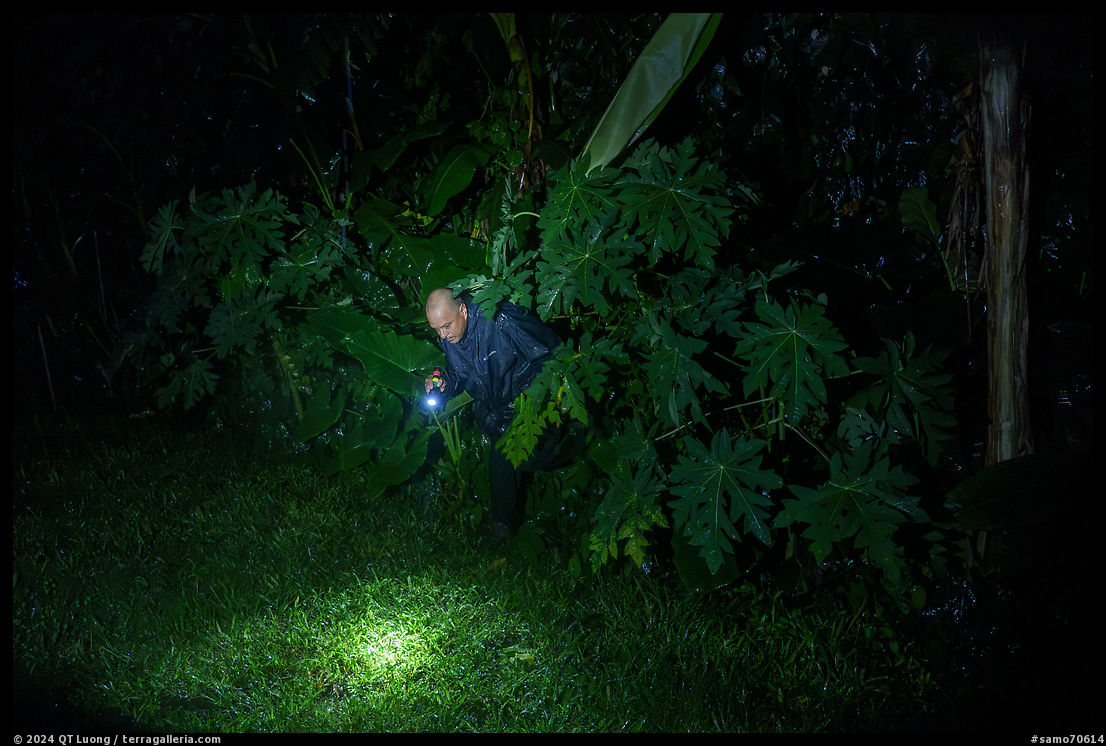
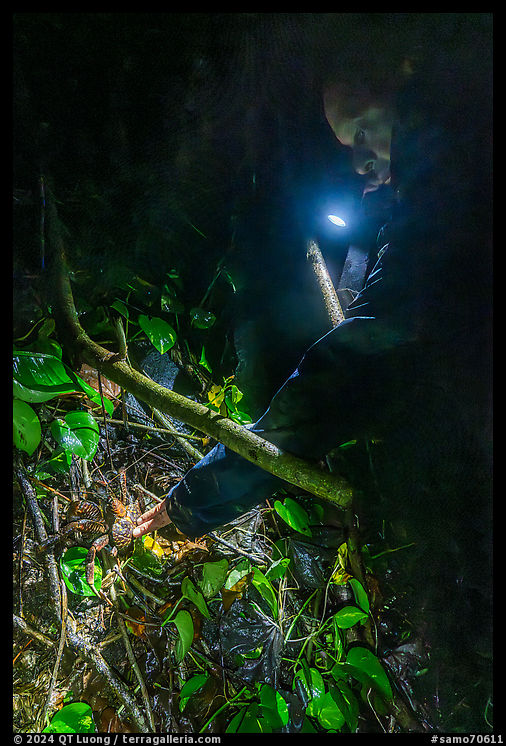
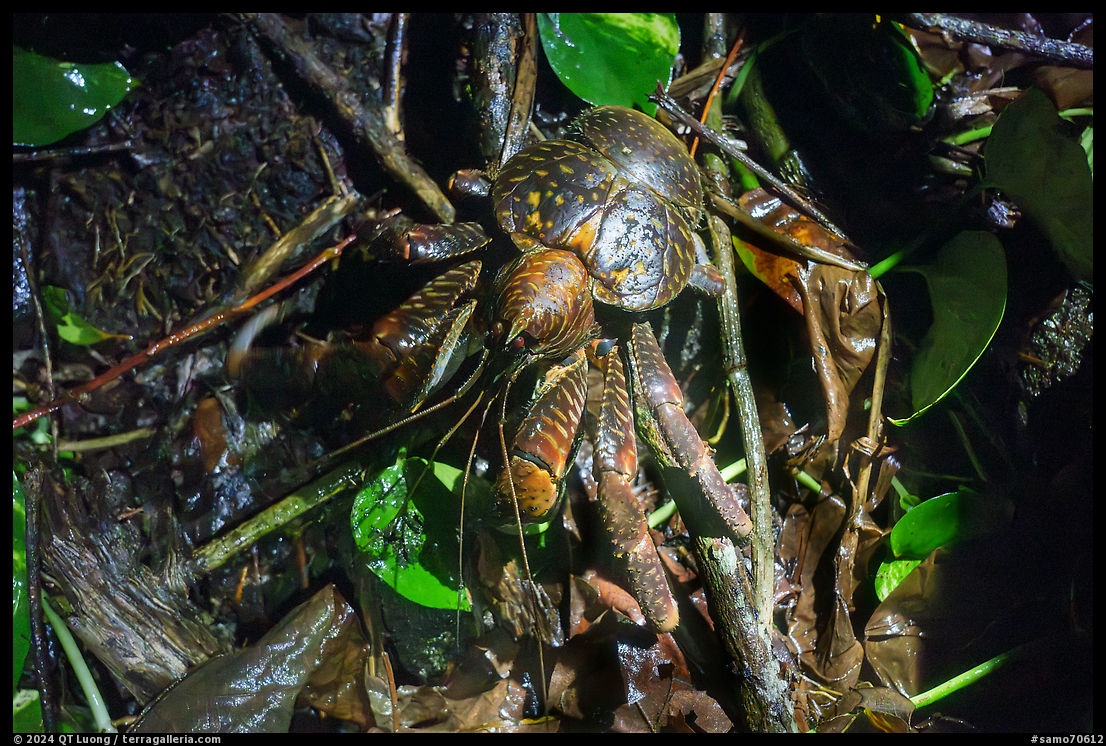
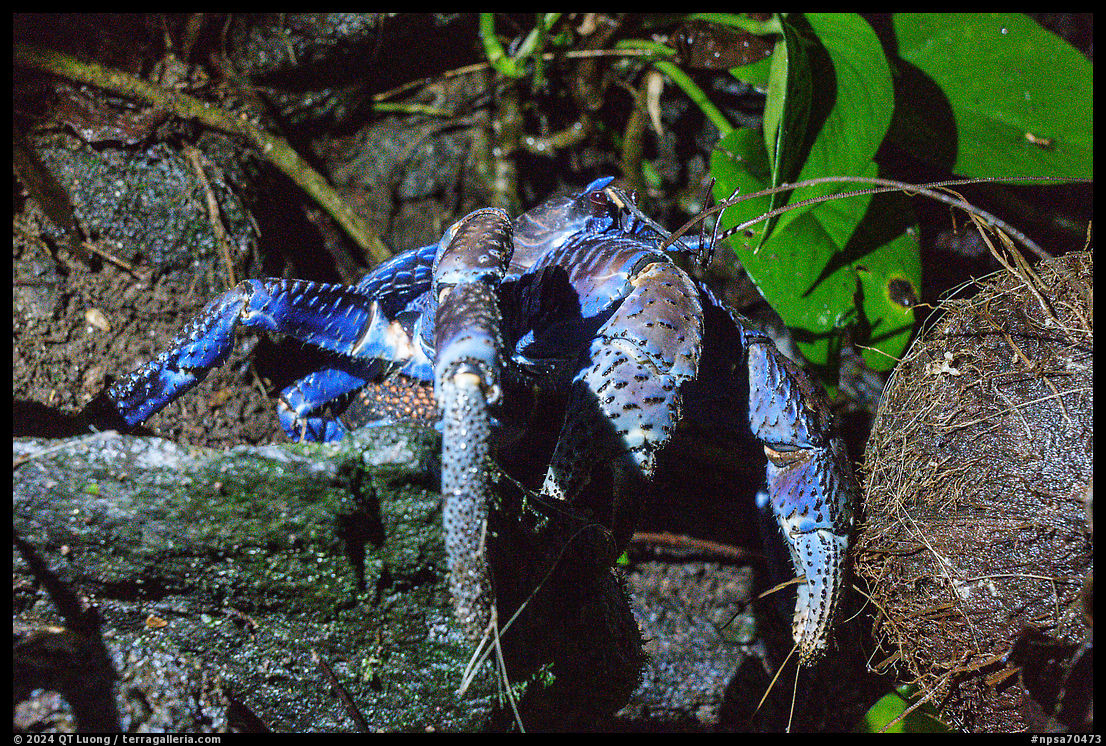
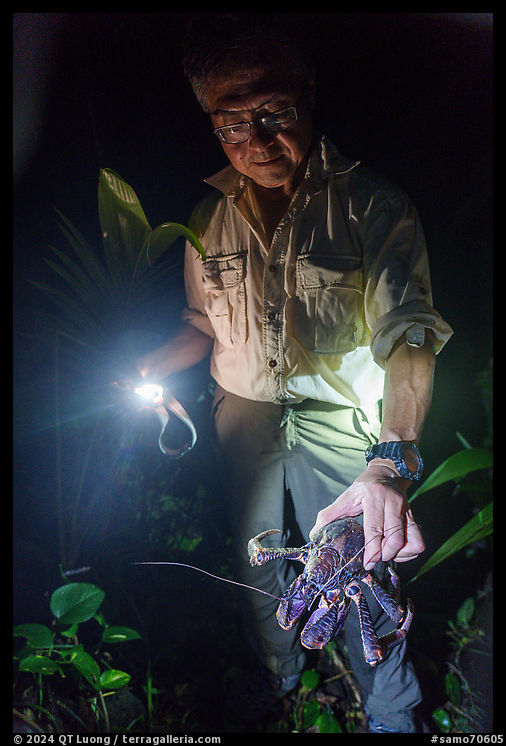
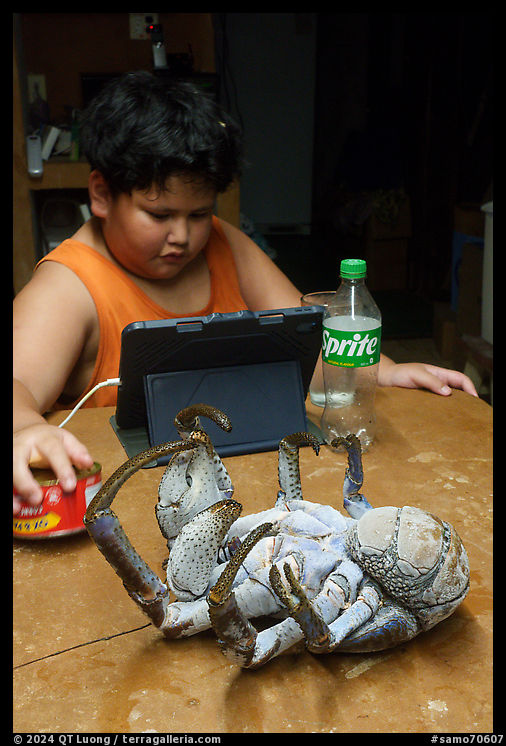
Part 2 of 5: 1 | 2 | 3 | 4 | 5

